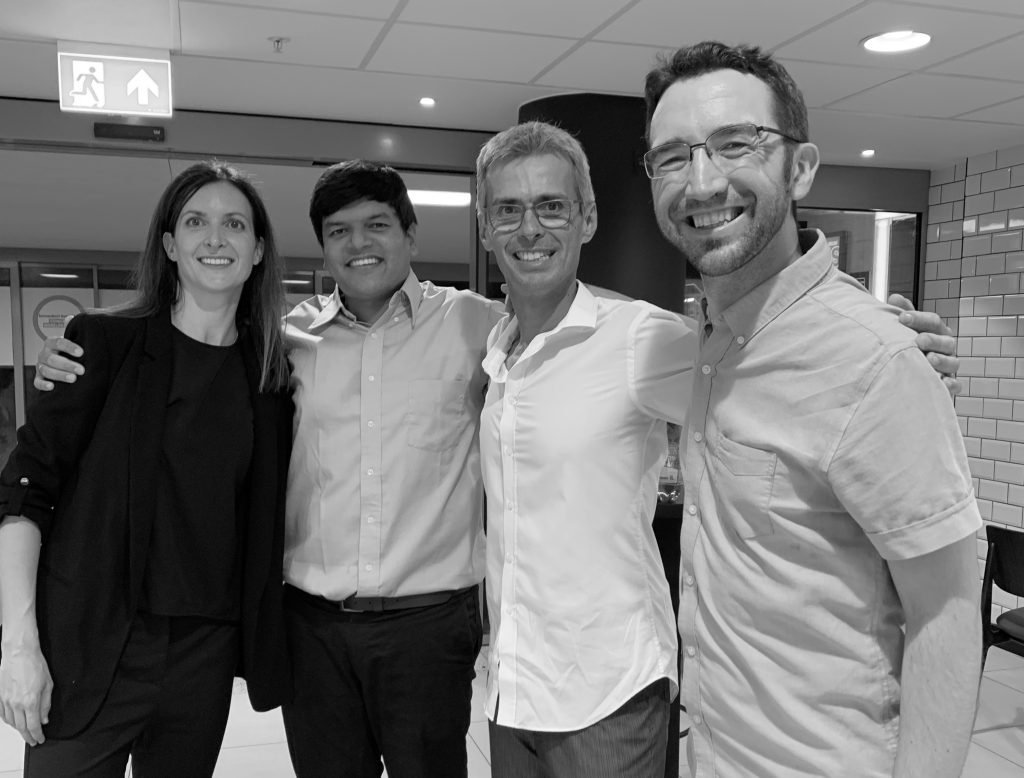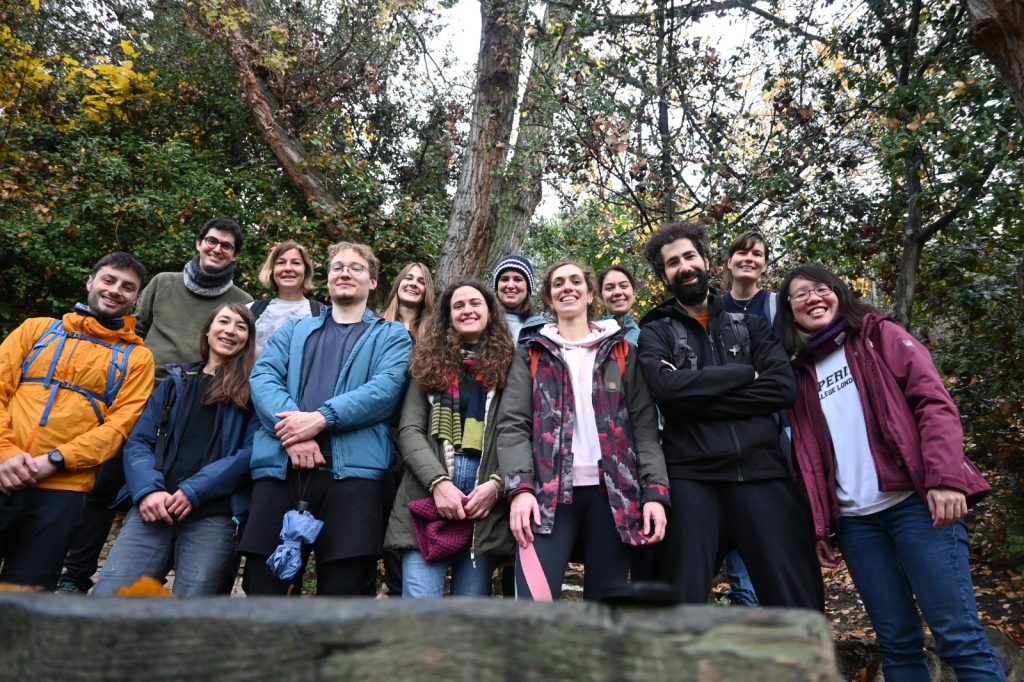Vikas Trivedi from EMBL Barcelona receives ERC Synergy Grant
Trivedi group – with CRG and CNRS collaborators – to embark on BREAKDANCE project that aims to bring together multidisciplinary researchers to study the mechanisms of how animal body plans develop

EMBL Barcelona group leader Vikas Trivedi and colleagues will receive more than EUR 10 million over the next six years for their project BREAKDANCE, that aims to identify the fundamental mechanisms that control the symmetry-breaking process in early embryos. Symmetry breaking is a recurring phenomenon in biology where similar cells start to take decisions, change their characteristics and develop into different tissues. So, how do cells take those decisions? How do cells at one end of the embryo know how to make a head, and cells at the other end to make a tail, if they all start the same in the early embryo? These are some of the questions that the ‘BREAKDANCErs’ – a multidisciplinary team of biologists, engineers and physicists – will study during the next few years.
Trivedi is coordinating this project, working together with Verena Ruprecht from the Centre for Genomic Regulation (CRG) in Spain and Pierre-François Lenne and Matthias Merkel, from the Centre National de la Recherche Scientifique (CNRS) in France.
An ambitious project
ERC Synergy Grant projects address big research questions – so big that the awardees must team up with other research groups, often from different disciplines, which is central to the BREAKDANCE project.
“The name, BREAKDANCE, refers to the dynamic interactions between cells in a tissue – their dance that breaks the symmetry.” said Lenne, principal investigator at CNRS. “I am fascinated at how biological systems self-organise robustly. This project is a unique opportunity to understand how they achieve this.”
“The question that brought the four of us together is a simple one: how is that a developing embryo generates reproducible shapes and patterns of the different tissues that it’s made up of?” said Ruprecht, principal investigator at CRG. “We know that all tissues – early embryos, in particular – require a reference coordinate – a system of axes that can instruct the cells about top-bottom, front-back or left-right in a three-dimensional space. For example, to generate a functional body plan in an embryo, the cells of head, arms and legs have to be arranged correctly. If the axes are faulty, the arrangement and function of constituent cells will be wrong. Yet, we do not know how the gene networks and biophysical processes combine to build the animal body plan.”
“The challenge for us is to understand how do cells in a tissue work together to generate these axes in the first place that in turn ‘guide’ them. What is even more fascinating is that the shape and size of the tissue will in turn affect the behaviour of cells. Imagine a tissue that is spherical versus one that is cylindrical. Cells in a sphere can only sense bulk versus surface but in a cylinder, cells can also be oriented along a top-bottom axis. Thus, the geometry of tissue can influence cell-level mechano-chemical interactions, but we do not have a mechanistic understanding of how this multi-scale coordination happens in a developing embryo.” Trivedi added, “Our goal is to recreate this process at a level that allows us to identify the mechanisms underlying symmetry breaking.”

An in-depth symmetry breaking study
Deciphering the rules of how the body plan of animals is developed is one of modern biology’s important challenges. Despite the many groundbreaking advances in molecular biology and genetics, a separation of research fields studying genetic and biophysical mechanisms has slowed the progress in this context. It is only recently that researchers gained access to approaches that can mimic multicellular tissue organisation in vitro.
The challenge, therefore, is to integrate experimental data from multiple scales with powerful computational modelling methods, and that requires a combined expertise in biology, physics, and engineering. This is where Trivedi and his colleagues teamed up to build this interdisciplinary consortium with complementary expertise in synthetic bottom-up approaches, functional ex vivo assays, embryonic stem cells based in vitro models from different species, advanced imaging, biophysical perturbations, data science, and theoretical modelling.
As Merkel, PI at CRNS, puts it, “the ERC Synergy Grant will allow us to pioneer new approaches in understanding such multicellular coordination in living systems.” Together they will address questions such as: how does global geometry control local cellular states and interactions? How does local cellular behaviour drive robust symmetry breaking at tissue-level? How far can geometry control cell fate specification in a species-independent manner?”
These are all fundamental scientific questions that feed into a better understanding of what drives the plan for an animal’s body.
“There are multiple ways in which symmetry can be broken, depending upon the chemical and mechanical properties of the cells,” Trivedi said. “With this grant, we will perform a much more detailed analysis of the symmetry-breaking process across species and test these hypotheses in parallel. We will be training the next generation of young scientists who are comfortable with the cross talk between biology, physics, and engineering. Our dream is that if you give us a bunch of cells, we will be able to control the shape and pattern they generate. This level of control over cells in a dish is the Holy Grail in the field of tissue engineering and it’s the driving motivation that brings the four of us together.”
Success already
ERC Synergy Grants are highly competitive but open to researchers from all disciplines. In the 2022 call, the ERC funded only 10% of the applications. Because Trivedi and his collaborators comprise a relatively young research collective, they considered this funding an especially impressive achievement.

“When we went for the interviews in Brussels, I saw a quote in the corridor that read, ‘The European Research Council Executive Agency is dedicated to selecting and funding the excellent ideas that have not happened yet, and the scientists that are dreaming them up.’ This statement left a strong impression on me and this Synergy Grant has only reinforced my conviction we can achieve much more through collaboration and cooperation in science. This is great news for us but also for all researchers based in Europe,” Trivedi said. “We hope we will be an example for young scientists to design ambitious projects and apply for the ERC Synergy Grant.”
This award is very much in line with EMBL’s mission to coordinate and integrate life sciences in Europe. For the next six years, BREAKDANCE will bring together four teams based in two different countries in an effort to discover the underlying fundamental laws of life.
This is the first Synergy Grant awarded to EMBL Barcelona, but also to EMBL in general within the Horizon Europe 2021-2027 programme.



